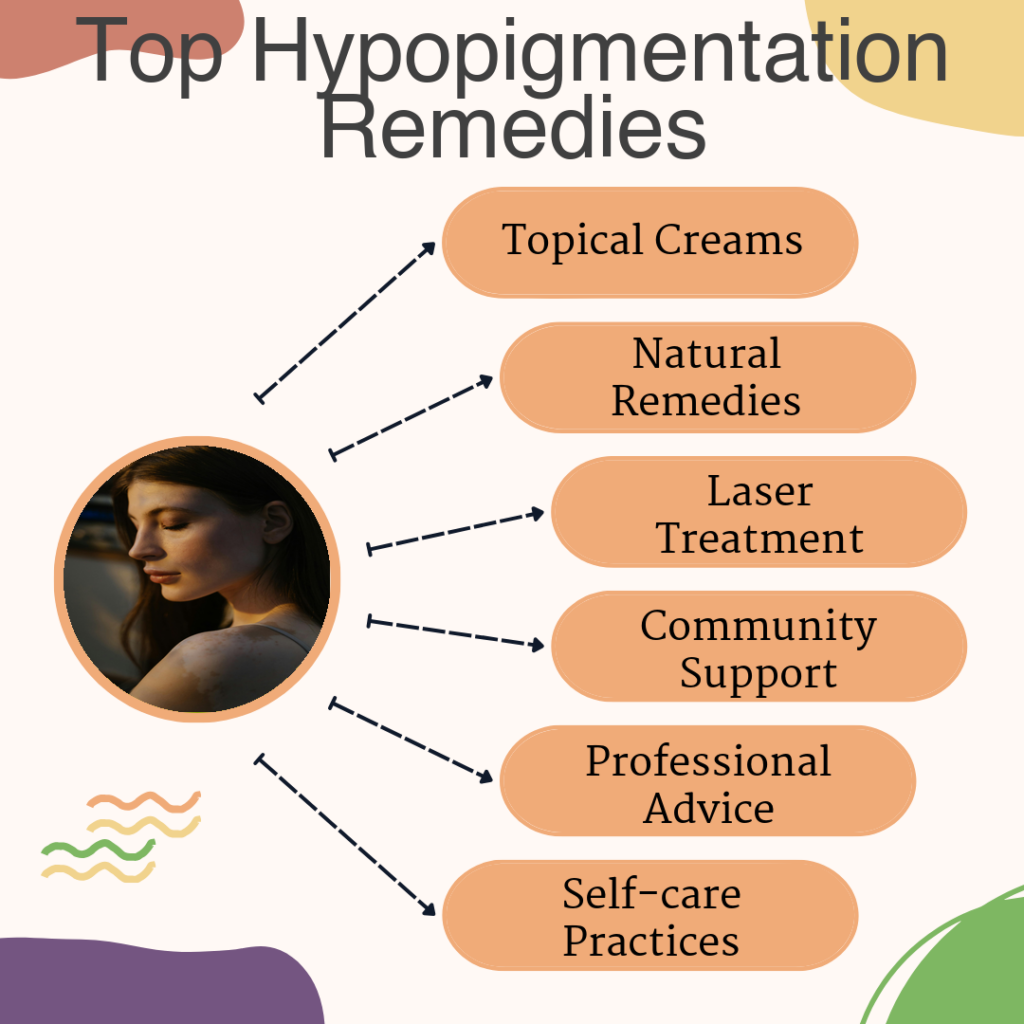In this comprehensive guide, we delve deep into the world of hypopigmentation. Skin discoloration can affect self-esteem and skin health. Our skin relies on a pigment called melanin for its color. When melanin decreases, it results in lighter skin patches. Hypopigmentation can impact people of all ages and backgrounds. Understanding why it happens and how to manage it can help ease concerns. Let’s explore this skin condition further.
Understanding and Recognizing Hypopigmentation
Melanin plays a significant role in defining skin color. Melanocytes produce this pigment. When melanin levels drop, hypopigmentation occurs. This condition results in lighter, sometimes patchy, skin. Hypopigmented patches can appear anywhere and vary in size.
It’s essential to differentiate hypopigmentation from other discolorations. While hypopigmentation makes skin lighter, hyperpigmentation does the opposite—it darkens skin, leading to spots and patches.
Identifying hypopigmentation can be simple with these signs: – Hypopigmentation patches that differ from surrounding skin – Patches that increase in visibility under sunlight – Changes that occur after skin injuries or inflammation, known as post-inflammatory hypopigmentation
Recognizing these signs helps in addressing them timely. Look for irregular patches or a stark contrast to your natural skin color as early indicators.
Causes and Types of Hypopigmentation
Various factors lead to hypopigmentation. Genetic conditions such as albinism cause a lack of melanin entirely. Other conditions, like certain forms of eczema or vitiligo, result in hypopigmented patches.
Here are some common causes:
- Genetic causes: Albinism is the most recognized. It affects melanin production completely.
- Skin inflammation: Conditions like eczema or psoriasis may leave lighter patches once inflammation subsides.
- Injuries: Cuts or burns can heal with less pigment, resulting in post-inflammatory hypopigmentation.
- Medication: Certain medications might disrupt melanin, causing hypopigmentation.
The types of hypopigmentation can vary: – Generalized hypopigmentation affects large body areas, noticeable in conditions like albinism. – Localized hypopigmentation refers to smaller patches, like those from a scar or burn.
Understanding the type and cause of your hypopigmented patches can aid in seeking the right treatment. Each condition has specific characteristics, helping medical professionals tailor a solution.
Navigating Treatment and Emotional Wellbeing
Dealing with hypopigmentation involves exploring treatments and emotional support. Various options range from simple remedies to advanced procedures like hypopigmentation laser treatment.
Popular treatments include: – Topical creams: These can help enhance melanin production, evening out skin tone. – Natural remedies: Some also turn to home-based solutions, such as aloe vera or exfoliation, which might aid slightly. – Laser treatment for hypopigmentation: This advanced method encourages pigment production. However, care is necessary as sometimes hypopigmentation from laser treatment might occur if improperly administered.
Ensuring proper treatment can greatly improve skin appearance. Visit a dermatologist for tailored advice.
Aside from physical treatments, addressing emotional impacts is crucial: – Find community groups where others share their journey with hypopigmentation. – Seek counseling if hypopigmentation affects self-esteem or social interactions.
Routine and self-care can bolster confidence too. Understanding that these lighter patches do not define self-worth makes a difference. Support networks help in reminding oneself of worth beyond appearance.
By staying informed about hypopigmentation patches and treatment options, individuals can manage both skin and emotional well-being effectively. Community and professionals support to navigate this journey smoothly.



